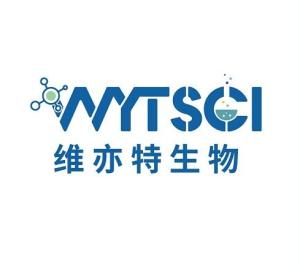
|
FPS-ZM1
- 英文名称:FPS-ZM1
- 品牌:WYTSCI
- 产地:进口
- 型号:1MG
- 货号:WT-AY-B11319
- cas:945714-67-0
- 价格: ¥1/mg
- 发布日期: 2025-04-10
- 更新日期: 2025-12-18
产品详请
| 产地 | 进口 |
| 品牌 | WYTSCI |
| 货号 | WT-AY-B11319 |
| 用途 | 科研检测 |
| 英文名称 | FPS-ZM1 |
| 包装规格 | 1MG |
| CAS编号 | 945714-67-0 |
| 别名 | FPS-ZM1 |
| 纯度 | 98+% |
| 是否进口 | 是 |
纯度:98% by HPLC,;NMR (Conforms)
分子式:C20H22ClNO
分子量:327.85
溶剂:DMSO (35 mg/ml) Ethanol (20 mg/ml)
性状:Off-White solid
存储:-20°C
Activity (short version):RAGE inhibitor
Function / Pharmacology:FPS-ZM1 is a high-affinity Receptor for Advanced Glycation End products (RAGE) inhibitor (IC50 = 0.6 μM). It is able to lower levels of Aβ via binding to the V domain of RAGE and can block multiple mechanisms of Aβ40- and Aβ42-induced cellular stress in RAGE-expressing brain endothelium, neurons and microglia in vitro and in vivo.1,2 Can cross the BBB. In a rat model of intracerebral hemorrhage, FPS-ZM1 was able to attenuate blood-brain barrier and white matter fiber damage.3 FPS-ZM1 inhibition of RAGE was able to ameliorate inflammatory damage after acute intracerebral hemorrhage via downstream blockade of high mobility box-1(HMGB1) signaling.4 FPS-ZM1 has also been shown to impair breast cancer cell invasion and metastasis.5
分子式:C20H22ClNO
分子量:327.85
溶剂:DMSO (35 mg/ml) Ethanol (20 mg/ml)
性状:Off-White solid
存储:-20°C
Activity (short version):RAGE inhibitor
Function / Pharmacology:FPS-ZM1 is a high-affinity Receptor for Advanced Glycation End products (RAGE) inhibitor (IC50 = 0.6 μM). It is able to lower levels of Aβ via binding to the V domain of RAGE and can block multiple mechanisms of Aβ40- and Aβ42-induced cellular stress in RAGE-expressing brain endothelium, neurons and microglia in vitro and in vivo.1,2 Can cross the BBB. In a rat model of intracerebral hemorrhage, FPS-ZM1 was able to attenuate blood-brain barrier and white matter fiber damage.3 FPS-ZM1 inhibition of RAGE was able to ameliorate inflammatory damage after acute intracerebral hemorrhage via downstream blockade of high mobility box-1(HMGB1) signaling.4 FPS-ZM1 has also been shown to impair breast cancer cell invasion and metastasis.5









